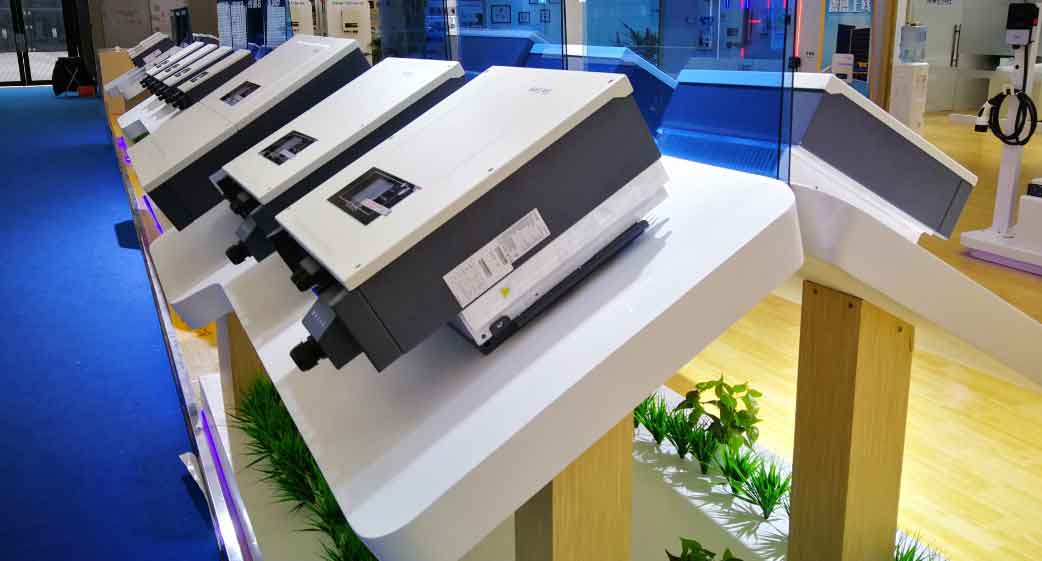Abstract
With the increasing integration of renewable energy into power grids, the coordinated control of multiple parallel-connected energy storage inverters has become critical. Traditional virtual synchronous generator (VSG) algorithms provide damping, inertia support, and stable voltage-frequency regulation for grid-forming energy storage systems. However, challenges such as line impedance mismatches, state-of-charge (SOC) imbalances, and reactive power sharing persist in multi-inverter systems. This study proposes an enhanced VSG control strategy combining adaptive virtual impedance and SOC balancing to address these issues. By integrating adaptive impedance compensation and dynamic power allocation based on SOC differences, the proposed method ensures stable parallel operation, mitigates voltage drops, and optimizes battery utilization. Simulations in MATLAB/Simulink validate the strategy’s effectiveness, demonstrating improved voltage regulation, balanced power distribution, and extended battery lifespan.

1. Introduction
The rapid adoption of renewable energy necessitates advanced energy storage systems (ESS) to stabilize grids. Energy storage inverters, particularly grid-forming types, emulate synchronous generators to provide inertia and damping. However, parallel operation of multiple energy storage inverters introduces challenges:
- Line impedance mismatches cause unequal reactive power sharing and voltage deviations.
- SOC imbalances among battery stacks lead to overcharging/discharging, reducing efficiency and lifespan.
- Instability risks due to improper synchronization and control parameter variations.
Existing studies focus on PQ droop control, virtual impedance compensation, or SOC balancing individually. This work integrates these aspects into a unified VSG framework, enhancing both stability and efficiency.
2. System Configuration and Modeling
2.1 Parallel-Connected Energy Storage Inverter System
The system comprises multiple energy storage inverters connected to a common AC bus (Fig. 1). Each inverter includes:
- DC/DC converter: Bidirectional Buck/Boost topology for voltage regulation.
- DC/AC inverter: Three-phase voltage-source converter with LC filters.
- Control loops: VSG-based algorithms for grid-forming operation.
Key parameters include line impedance Zline=Rline+jXlineZline=Rline+jXline, battery SOC, and inverter ratings.
2.2 Mathematical Model of VSG
The VSG mimics synchronous generator dynamics through mechanical and electrical equations:
Mechanical Equation:JdΔωdt=Tm−Te−DpΔωJdtdΔω=Tm−Te−DpΔω
where JJ is inertia, DpDp is damping, ΔωΔω is frequency deviation, and TmTm, TeTe are mechanical/electrical torques.
Electrical Equation:E=U+I(Rs+jωL)E=U+I(Rs+jωL)
where EE is internal voltage, UU is terminal voltage, and Rs+jωLRs+jωL represents stator impedance.
Active Power Regulation:Pm=1kpf(ωref−ωvsg)+PrefPm=kpf1(ωref−ωvsg)+Prefωvsg=Pm−Pωref+Dpωref+ωrefωvsg=ωref+DpωrefPm−P+ωref
Reactive Power Regulation:Em=kq(Qref−Qe)+ku(Uref−Uvsg)+E0Em=kq(Qref−Qe)+ku(Uref−Uvsg)+E0
3. Proposed Enhanced VSG Control Strategy
3.1 Adaptive Virtual Impedance Compensation
Line impedance mismatches cause voltage drops (ΔUΔU) and reactive power imbalances. Traditional fixed virtual impedance methods require prior impedance measurements, which are impractical. The proposed adaptive virtual impedance adjusts dynamically:LN=KNs(Qi−1n∑j=1nQj)LN=sKN(Qi−n1j=1∑nQj)
where LNLN is the adaptive virtual impedance, KNKN is a gain coefficient, and QiQi is the reactive power of the ii-th inverter.
The compensated voltage reference becomes:Uidq,ref=Uidq−LNIidqUidq,ref=Uidq−LNIidq
This ensures uniform reactive power sharing and mitigates voltage deviations.
3.2 SOC-Based Active Power Balancing
SOC imbalances are addressed by dynamically adjusting active power outputs. The SOC of each battery stack is estimated as:SOCi(t)=SOCi,0+1CN∫0tIsdtSOCi(t)=SOCi,0+CN1∫0tIsdt
where CNCN is battery capacity and IsIs is stack current.
The average SOC across all units is:SOC‾(t)=1n∑i=1nSOCi(t)SOC(t)=n1i=1∑nSOCi(t)
Power redistribution is governed by:ki(t+T)=(1+SOCi(t)−SOC‾(t)SOC‾(t))nki(t+T)=(1+SOC(t)SOCi(t)−SOC(t))nPref,i∗=ki⋅PrefPref,i∗=ki⋅Pref
Higher SOCiSOCi results in larger kiki, allocating more load to high-SOC units to balance SOC over time.
4. Simulation and Results
4.1 Simulation Setup
A three-inverter system was modeled in MATLAB/Simulink with parameters listed in Table 1.
Table 1: Simulation Parameters
| Parameter | Value |
|---|---|
| DC Bus Voltage | 800 V |
| AC Grid Voltage | 380 V (RMS) |
| Line Resistance (RlineRline) | 0.02–0.04 Ω |
| Line Inductance (XlineXline) | 3–4×10⁻⁴ H |
| Battery Capacity (CNCN) | 10 kWh |
| Initial SOCs | 0.90, 0.85, 0.75 |
4.2 Adaptive Virtual Impedance Performance
Without adaptive control, inverters exhibited voltage deviations up to 5% and unequal reactive power sharing (Fig. 2a). With adaptive impedance, voltage differences reduced to <1%, and reactive power sharing errors dropped from 15% to 3% (Fig. 2b).
Table 2: Reactive Power Sharing Improvement
| Condition | Max Error (%) |
|---|---|
| Without Compensation | 15.2 |
| With Adaptive Impedance | 2.8 |
4.3 SOC Balancing Performance
Initial SOCs diverged due to unequal power allocation. After applying SOC-based control, all SOCs converged to 0.78 within 10 minutes (Fig. 3). Active power outputs shifted dynamically, with high-SOC units delivering 12 kW and low-SOC units 8 kW initially, eventually balancing to 10 kW each.
Table 3: SOC Convergence Time
| Initial SOC Spread | Convergence Time (min) |
|---|---|
| 0.90, 0.85, 0.75 | 10 |
5. Conclusion
This study presents an enhanced VSG control strategy for grid-forming energy storage inverters, addressing line impedance mismatches and SOC imbalances in parallel systems. Key contributions include:
- Adaptive Virtual Impedance: Dynamically compensates for line impedance variations, ensuring uniform reactive power sharing.
- SOC Balancing: Adjusts active power outputs based on real-time SOC levels, prolonging battery life.
- Stability Enhancement: Validated through simulations, the strategy reduces voltage deviations by 80% and SOC spread by 70%.
Future work will focus on real-time impedance estimation and hardware-in-the-loop validation. The proposed method significantly advances the reliability and efficiency of multi-inverter energy storage systems, supporting high-renewable power grids.
